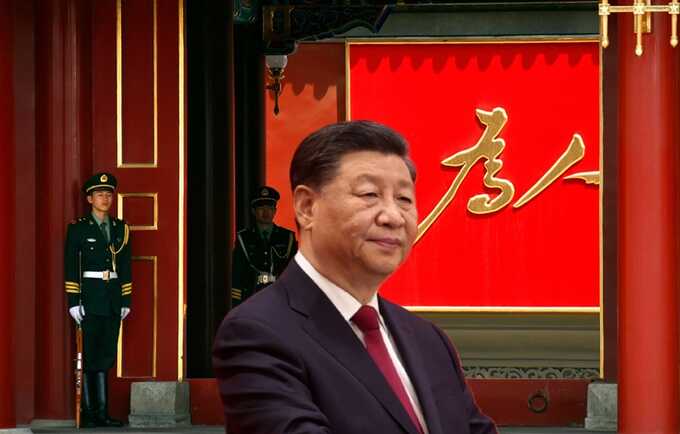
Above Beijing’s imperial center rises Jingshan, or Prospect Hill. From a pagoda at its modest peak, a panoramic view of the city presents itself.
To the south, the dull golden roofs of the Forbidden City crest and fall, pulling the eye southward to Tiananmen — the Gate of Heavenly Peace — and the vast square of the same name just beyond. To the east stand the smooth metallic skyscrapers of the city’s business district. To the north, at the top of Beijing’s central axis — its so-called dragon’s vein — sit the Bell and Drum Towers, which once acted as the city’s collective timepiece. And stretching all along the western periphery are the calm, tree-lined waters of the manmade lakes, dug by hand for the pleasure of past emperors.
It’s this aerial view of “Zhongnanhai,” meaning “middle and southern seas,” and the surrounding buildings that today’s Chinese leaders prefer you did not see. That’s because the 1,500-acre site of repurposed imperial pavilions and temples, along with gray modern offices has formed the leadership compound for the ruling Chinese Communist Party (CCP) since 1950.
As the seat of power, Zhongnanhai is often thought of as China’s equivalent to the White House, or the Kremlin. Synonymous with China’s communist party elite, and among the country’s most secretive places, it is ringed by a centuries-old red ochre wall, with countless CCTV cameras periscoping above it — and patrolled assiduously by security forces in both plain clothes and uniform.
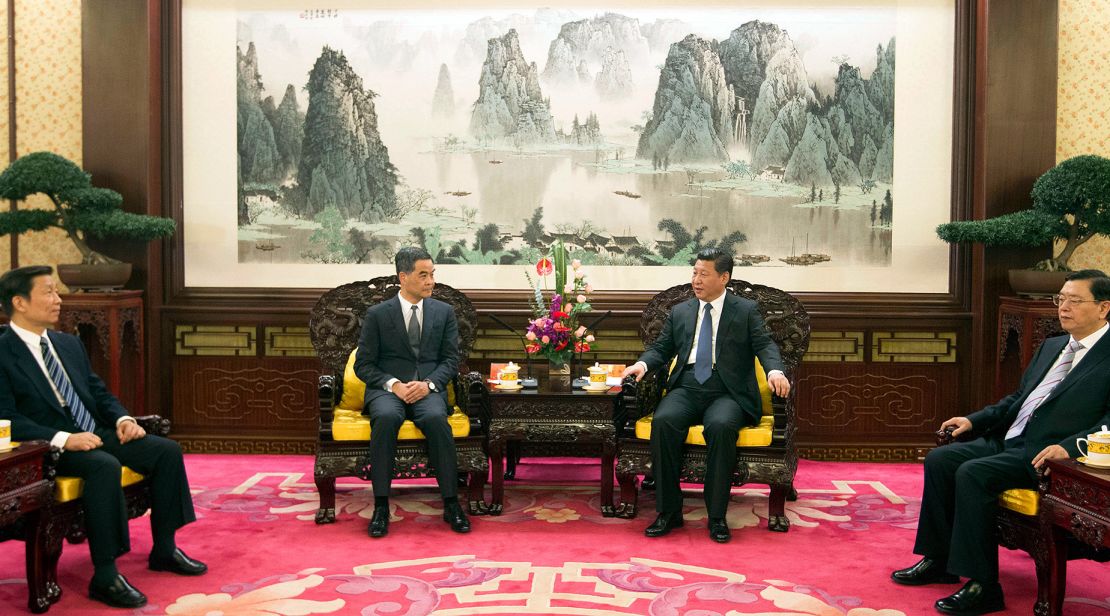
A meeting with former Hong Kong Chief Executive Leung Chun-ying and Chinese leader Xi Jinping in Zhongnanhai on December 26, 2014, a large landscape painting in the background.
Simon Song/South China Morning Post/Getty Images
A peaceful getaway
For Chinese leader Xi Jinping’s imperial forebears, the site served a somewhat different function. While emperors of the Ming and Qing dynasties ruled their vast kingdom from within the Forbidden City, they built temples, halls and living quarters in Zhongnanhai; less grandly ceremonial than those of the palace, they were often oriented to take advantage of the views afforded by the area’s tranquil waters and carefully planned gardens. Many of these emperors came to favor passing their days surrounded by drooping willows in the cool and quiet of this cultivated pleasure garden.
A story relayed by the scholar Geremie Barmé in his book “The Forbidden City” tells of the 18th-century Qianlong Emperor’s daily routine at Zhongnanhai: Each morning, after a first breakfast of cold swallows nest soup, he would travel by heated palanquin to the gardens’ Studio of Convivial Delight, a pavilion he built to capitalize on the view of the South Lake, where he would breakfast again on a meal of 18 dishes.
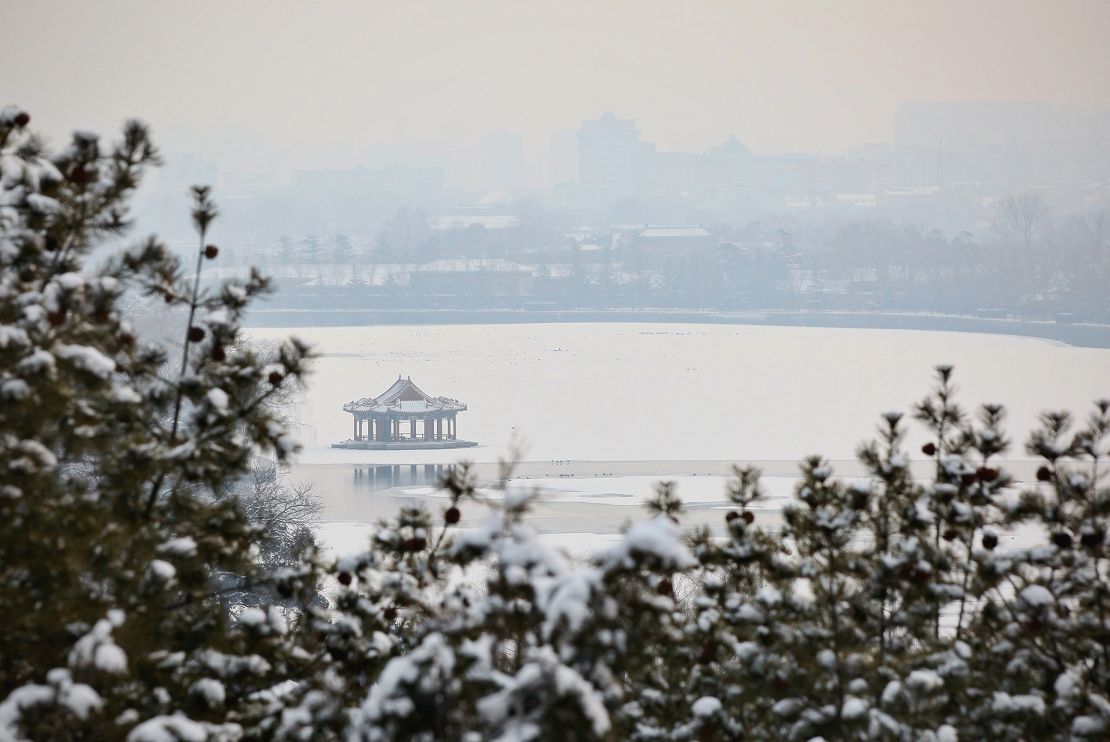
A snow-covered Zhongnanhai captured on February 13, 2011.
Feng Li/Getty Images
As the historian and author of “The Shortest History of China,” Linda Jaivin, told CNN via email: “There is something outrageous and yet poetic about the incredible coordination and effort required of a team of bearers, cooks and attendants, just so that an emperor could come, catch a view of the magnificent Ocean Terrace, scoff his food and (leave).”
The first ruler to view Zhongnanhai as primarily a place to govern from, not simply relax in, was the Empress Dowager Cixi, who effectively controlled China for almost five decades from 1861. She lived for many years in the gardens’ Hall of Ceremonial Phoenixes, which became the center of political authority in China. She would die there in 1908.
The serene surroundings of Zhongnanhai also became, under Cixi, a place of punishment and confinement. In 1898, following attempted reforms that displeased her, Cixi imprisoned her nephew, the Guangxu Emperor, on Yingtai Island, which juts out into the southern lake.
Built as a miniature version of the mythical Penglai island, home to the immortals of Chinese legend, the tiny piece of land would become the emperor’s home for most of his life, bar a brief period when the Boxer rebellion of 1900 forced the whole court to flee the capital. He would die on Yingtai Island from arsenic poisoning the day before the Empress Dowager herself.
His imprisonment and death, said writer M. A. Aldrich, author of “The Search for a Vanishing Beijing: A Guide to China’s Capital Through the Ages,” perhaps adds a touch of poignancy for any subsequent resident of Zhongnanhai. “In addition to being a site that preserves sites of imperial splendor,” he told CNN, “it also functions as a reminder to the political elite about the consequences for stepping out of line.”
For Aldrich, however, the Zhongnanhai compound also represents the destructive impulses of the CCP towards its adopted capital in the years after 1949, when Mao Zedong proclaimed the foundation of the People’s Republic. “As a political symbol of the New China, it has been torn up, rebuilt, expanded, and revamped so many times that its connection with its elegant past has been lost,” Aldrich said.
Architectural changes
There have been serious revisions to the architecture of Zhongnanhai since the end of imperial rule in 1912. After the last emperor abdicated the throne, China’s new president Yuan Shikai granted him the right to live on the northern section of the Forbidden City — and then took Zhongnanhai to be his new administration’s headquarters.
The changes he made to the imperial gardens were disparaged by many of the Westerners who visited them. “Whatever may be one’s opinion as to whether Yuan Shikai ‘exalted his aim’ in his political career, he certainly cannot be said to have done so as builder and architect,” wrote L.C. Arlington and William Lewisohn in their 1935 book “In Search of Old Peking,” “for all the buildings that have been erected or restored by him are in the worst possible taste.”
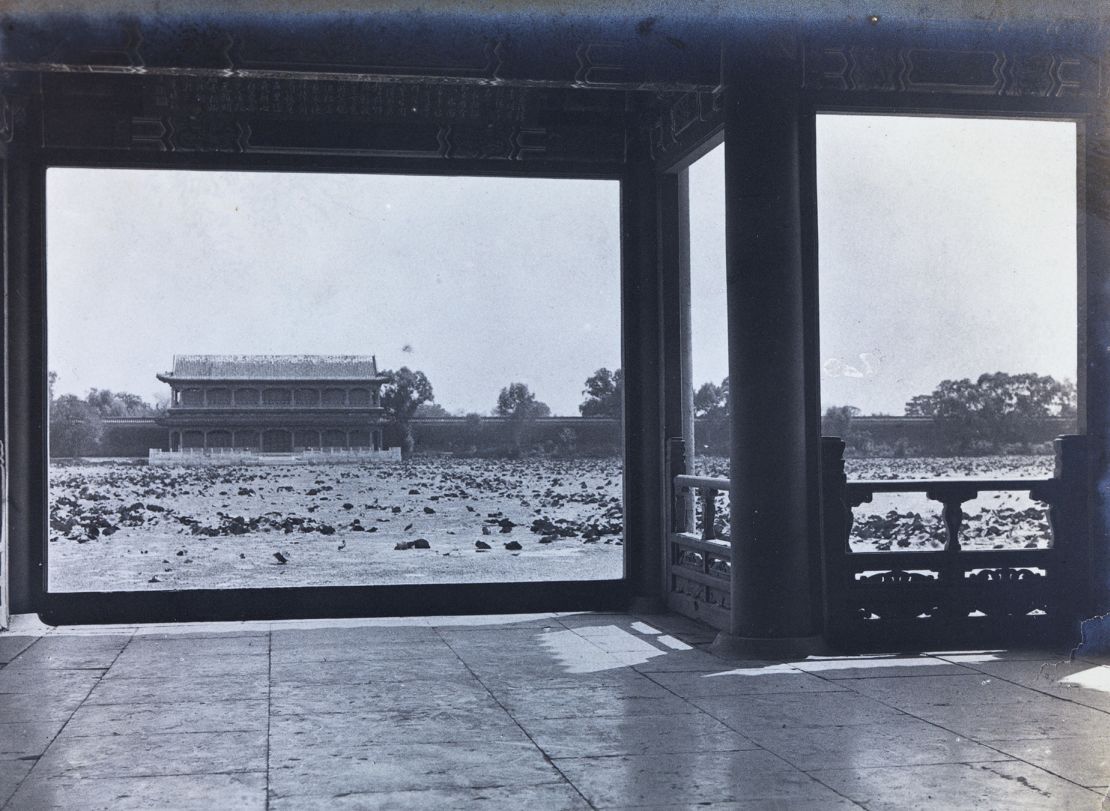
Xinhuamen, the south gate of Zhongnanhai, taken between 1912 and 1914.
William Cooper/Courtesy Special Collections, University of Bristol Library
Most notable of these changes — at least to ordinary Beijingers — was the repurposing of a two-story pavilion at the very south of the gardens. Known as the Precious Moon Tower, it had been built decades earlier by the Qianlong Emperor for a homesick lover, a Muslim woman from Xinjiang, taken to Beijing as part of the spoils of war. The concubine would gaze south from the tower toward a mock mosque and bazaar the emperor had especially constructed to assuage her longing for home.
Yuan refashioned this pavilion into the main entrance to his presidential compound, and established a tall watchtower just to its east. The gate was named Xinhuamen, or the Gate of New China. Today, the structure remains coated in the same deep red that graces the walls of all Beijing’s imperial buildings, with a roof of glazed yellow tiles and detailing that runs below the roofline, picked out in blue and gold.
The gate is now flanked by two red banners that speak to its modern purpose as China’s political and party headquarters: “Long Live the Great Communist Party of China” reads one; and “Long Live the Invincible Mao Zedong Thought” on the other.
On a screen wall recessed behind the entrance way, Chinese characters written in Mao’s own calligraphic style declare: “Serve the People.” Facing out onto Beijing’s main east-west thoroughfare, the gate remains the most conspicuous part of Zhongnanhai. The rest of the compound has, since 1989, been firmly off-limits to the Chinese public.
Seat of power
Initially, after the communist victory in China’s civil war in 1949, Mao Zedong took up residence at Shuangqing Villa in Fragrant Hills, another former imperial garden to the west of Beijing. Though wary of establishing himself in the imperial heart of Beijing — it is said that he refused ever to enter the Forbidden City, for fear of being associated with the power structures of old, feudal China he had fought to overthrow — Mao ultimately moved into Zhongnanhai and, in late 1949, he set up in the Garden of Abundant Beneficence, a large courtyard compound favored by both the Qianlong and Kangxi emperors, where he would hold court with dignitaries and live until 1966.
Having re-established Zhongnanhai as a center of political power in the new China, Mao set about rebuilding the compound according to his tastes.
“Since 1949, an assortment of new architecture styles has encroached into Zhongnanhai, with a tennis court, gymnasium, swimming pools and Western buildings topped off with Chinese eave roofs adding a discordant note that would not have been appreciated by its traditionally-minded original owners,” said Aldrich.
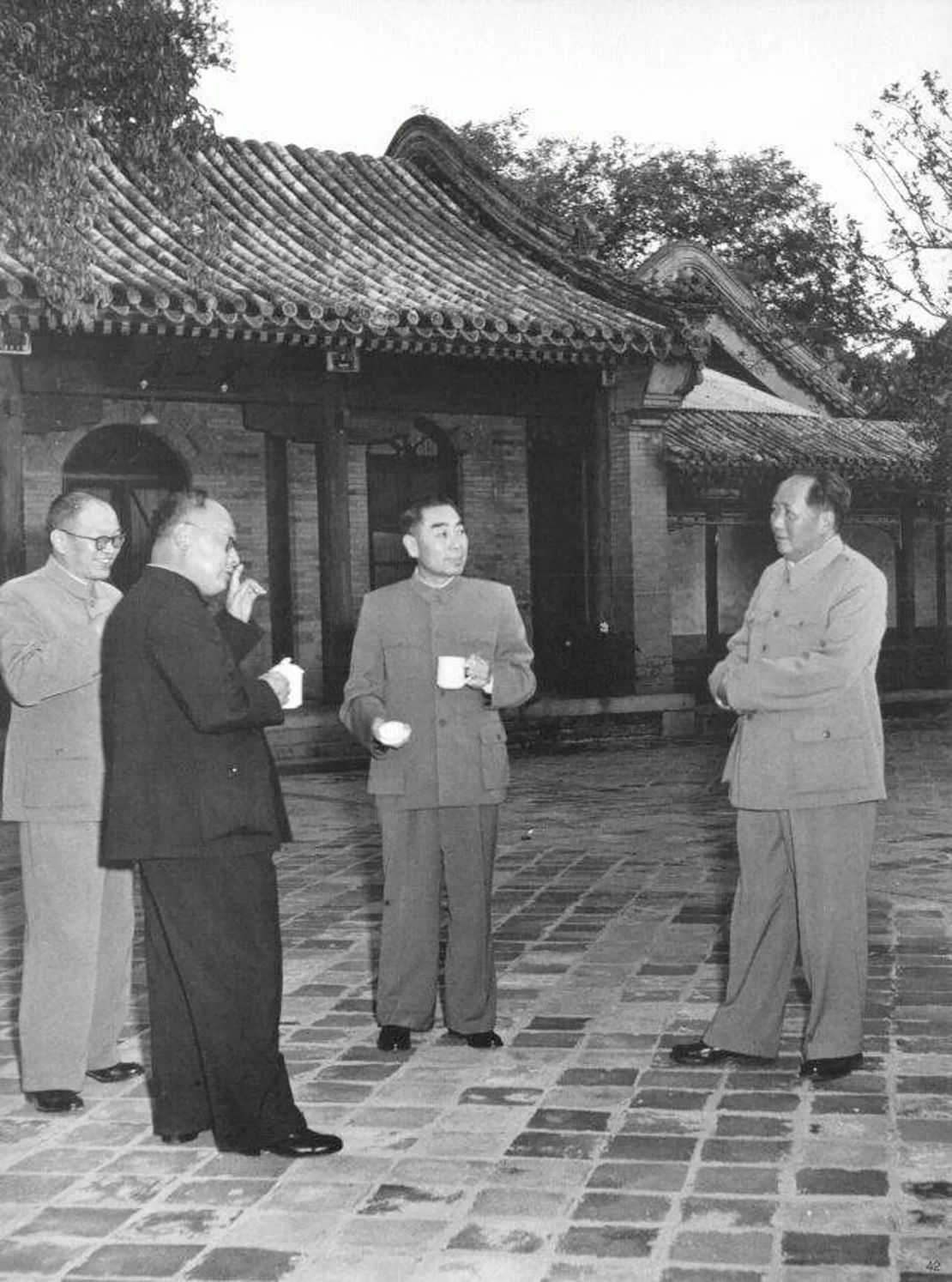
Mao Zedong, Zhou Enlai, Chen Yi and Zhang Wentian pictured in Zhongnanhai.
In 1966, Mao moved from the Garden of Abundant Beneficence to a specially built house beside his beloved indoor swimming pool. He often summoned officials to speak to him as he bobbed in the water — and famously received Russian leader Nikita Khrushchev at his pool during a 1958 visit.
“Their interpreters had to pace alongside the edge of the pool,” said Jaivin. “The Russian couldn’t swim and had to wear water wings. Mao loved both swimming and putting Khrushchev in his place. Finally, Khrushchev got sick of it, and clambered out to sit on the edge, dangling his feet in the water.”
In the residence next door, Mao lined his rooms with bookshelves housing an extensive library of Chinese classical literature. “It was here,” noted Aldrich, “with the background trappings of a scholar, that he met Nixon and Kissinger in 1972.”
Most subsequent leaders have preferred to keep a house outside the Zhongnanhai compound. Deng Xiaoping lived, from 1977, in a courtyard house on a nearby lane adjacent to Beihai, the “Northern Sea” of central Beijing’s chain of lakes. While not officially disclosed, it is believed that more contemporary leaders, including Xi Jinping and his predecessors Hu Jintao and Jiang Zemin, have maintained homes in an exclusive gated compound in Jade Spring Hill, sometimes called the “back garden” of Chinese politics, out to the city’s west.
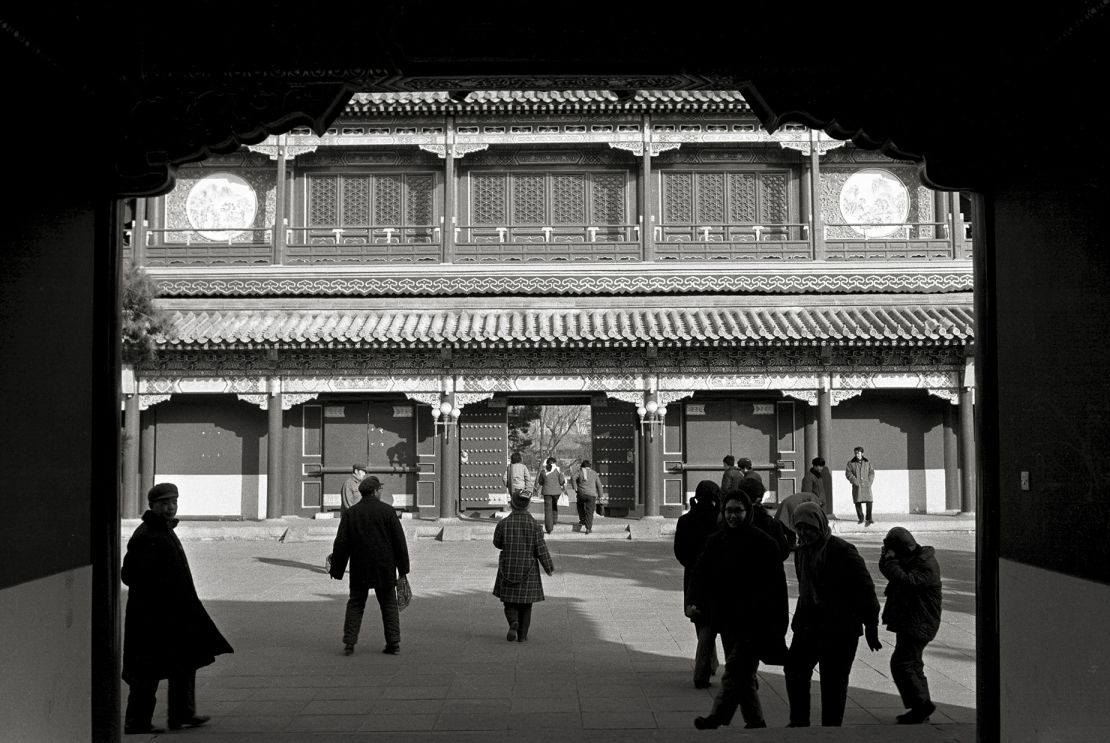
A shot of Zhongnanhai with visitors from the public in 1983.
Aldrich noted that those leaders and party cadres who used Zhongnanhai as their primary residence often attracted unwelcome scrutiny for their activities, particularly during years of political turbulence. “In his memoirs, Chairman Mao’s physician, Li Zhisui, commented that (the complex’s) residents were always under surveillance,” Aldrich said. “During the Cultural Revolution, the simple act of making a fire would bring down the wrath of the security guards on the perpetrator. It was believed that such a fire was proof that incriminating or seditious materials were being destroyed.”
The imperial gardens offering vistas of Zhongnanhai’s lakes have, today, been filled in with dozens of gray offices and meeting halls, many of which date to 1970s, when Zhongnanhai underwent significant razing and renovation — the rebuilding was so extensive that one visitor in 1979 described the grounds resembling a construction site, with muddy roads that were impossible to walk on. The contemporary compound splits roughly in two, with the northern buildings, on the banks of the “middle lake,” used as the headquarters of China’s top executive body, the State Council. It is here that foreign dignitaries are admitted. Around the “southern lake,” meanwhile, are the headquarters of the CCP, including, within Qinzheng Hall (the Hall of Diligent Government), the offices of the general secretary of the party (a post currently held by Xi).
Many of the most historically significant political events to occur at Zhongnanhai have taken place in Huairen Hall, or the Hall of Cherished Compassion, on the western side of the Middle Lake. The hall was added to the imperial park during the late Qing dynasty, but was then extensively remodeled by the CCP in the early 1950s to impart a more august socialist grandeur. It is a broad, imposing ceremonial hall with staggered roofs of glazed green tiles falling in curved lines to upturned corners; the facade of austere grey brick is interrupted by red wooden pillars, windows and doors. The building’s capacious interior houses a large auditorium, as well as numerous smaller meeting rooms.
The hall has, for decades, served as the main meeting place for China’s Politburo, the party’s decision-making body usually comprising about two dozen members. On occasion, it has also hosted the Politburo’s Standing Committee, the core of China’s political elite, (the power of both bodies has notably dwindled in the era of Xi), though they most commonly meet in Qinzheng Hall, close to the general secretary’s office.
During the tumult of the Cultural Revolution vital discussions and debates occurred at Huairen Hall, and, in the months after its conclusion, it was there that three of the so-called Gang of Four — the political faction that included Mao’s wife held responsible for the worst excesses of the era — were arrested, tricked into attending a meeting they thought was about the publication of the fifth volume of Mao’s Selected Works.
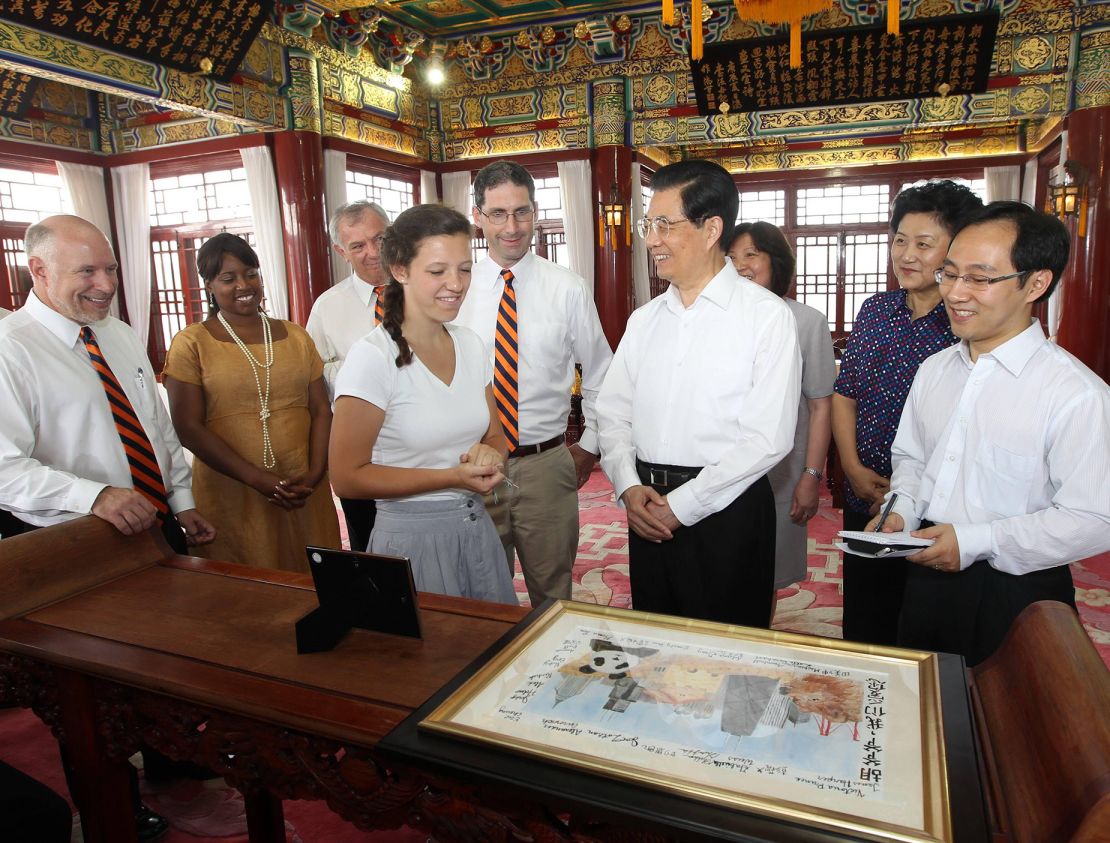
Chinese leader Hu Jintao (center) receives a gift from students and teachers of Chicago’s Walter Payton College Preparatory high school in Zhongnanhai on July 15, 2011.
In April 1989, former party head Hu Yaobang suffered a heart-attack during a Politburo meeting at Huairen; his death a week later would trigger the Tiananmen Square protests that the government forcibly cracked down on in early June of that year.
However, the compound hasn’t always been so forbidden for the masses following the collapse of China’s imperial dynasty. In the late 1920s, it became a park, with tourists allowed to boat on and swim in the lakes, while in the 1980s, the public could access some of its scenic and historical spots, including Mao’s former residence, on organized weekend tours. Even early in 1989, a journalist for the New York Times was able to casually drive a senior official into the compound and drop him off inside. During a period of warmer US and China relations in 2011, former Chinese president Hu Jintao invited a group of American high school students to Zhongnanhai.
Modern security concerns
Today, Zhongnanhai is more closely-guarded than ever, though the inexorable development of the city has caused problems in maintaining the compound’s secrecy. When an annex to the nearby Beijing Hotel was built in 1973, authorities were panicked by the realization that from its upper floors one could quite easily see – and potentially target a sniper rifle – into Zhongnanhai. A building was hastily erected on the western edge of the Forbidden City to restrict this view.
Likewise in 2018, when Beijing’s new tallest building was completed – the 528-meter Citic tower, better known as the “Zun” – the country’s national security apparatus reportedly requisitioned the top floors amid fears that visitors or occupants might be able to spy into the compound. Beijing authorities did not respond to CNN’s request for comment on the security situation at the time.
Zhongnanhai’s entrance, Xinhuamen, has also been the site of repeated demonstrations in recent decades; in 1989, it was a gathering point for students taking part in the Tiananmen protests, whilst in 1999, more than 10,000 members of the since-banned Falun Gong gathered on the sidewalks near Zhongnanhai to protest their treatment at the hands of the government.
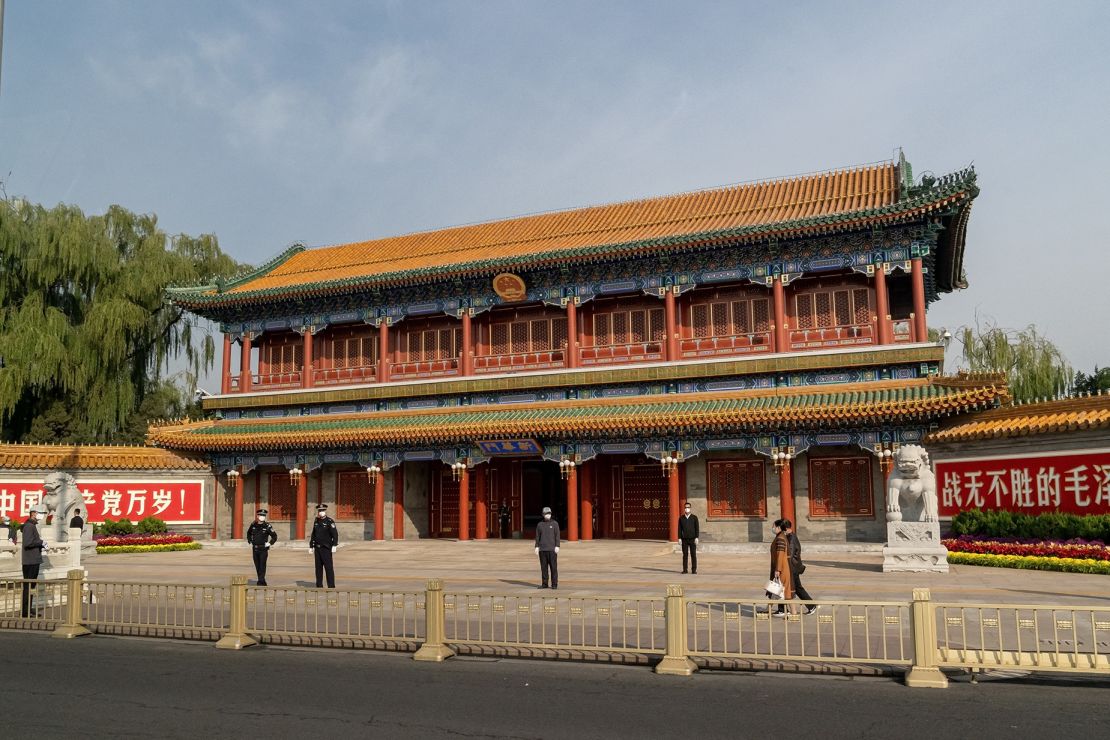
Zhongnanhai in Beijing, China on October 12, 2022.
So, while Zhongnanhai is sometimes compared to the White House, Aldrich argues that the paranoia with which the compound is today guarded makes it more like the imperial palace of centuries past: “Since ordinary people are not allowed to enter Zhongnanhai, it is probably more appropriate to describe it as a ‘New Forbidden City’ for China’s ruling elite rather than a place with a personal political resonance for the average citizen,” he said. “Heck, even the Kremlin is open to tourists!”